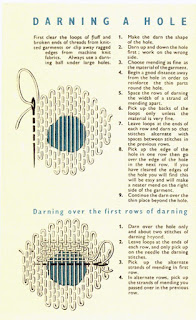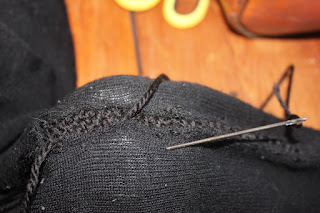Between Wednesday the 27 of Jan and Sunday the 31 of Jan I took part in RYLA, the Rotary Youth Leadership Award; a leadership course for young people aged between 18 and 24.
 One of our challenges was to be the group to raise the most money over a two hour period, the money would go towards an Emergency Response Kit or E.R.K.
One of our challenges was to be the group to raise the most money over a two hour period, the money would go towards an Emergency Response Kit or E.R.K.Below is the original post
___________________________________________
"
WE HAVE 2 HOURS ONLY!!!
I am taking part as one of seven partaking in the Rotary Youth Leadership Awards from January 27-31.
Rotary NZ has developed and produced Emergency Response Kits (ERKs) to provide essential supplies to emergency effected households in the Pacific.
We in New Zealand are the first response to the Pacific when they are hit by Natural disasters. Rotary provided and delivered 900 to Fiji in 2012 and about the same to Samoa in 2009.
One Emergency Response Kit contains the tools to construct a basic shelter, find food from the land and sea, to allow people to cook and clothe themselves. The empty plastic containers can hold 90L of water. There are 60+ Items.
One E.R.K. costs $600 and we have until 2.35pm to raise as much funds and awareness for these E.R.K.'s as we possibly can so help out team PINK and donate to help out so we can prepare to help those people in need!
Even $1 counts! Sharing this post helps too!
You can donate through the following link:
rnzwcs.org/donate
You can donate via bank transfer or through the Give-a-little page.
PLEASE put the following in your comment:
RYLA 2016 ERK TEAMPINK
Thank you so much for helping towards a great cause!
"
___________________________________________
After making this post my group split off into different parts of Wellington city to raise money any way possible; one of my team members Moni and myself teamed up and went to some workplaces where they sent an email around to all employees. We then found a spot on Cuba St where we based ourselves asking for help from the public in the form of donations and also sharing with them our cause.
What happened next changed my view of people. We had many people who would walk past in a hurry, giving you the cold shoulder. There were people who would say no and continue on with their day. There were people who would ignore you completely, not willing to spare the time just to say no.
Then there were the others. There was an incredible outpouring of generosity from all sorts of different people. Some of them would search the bottom of their wallets for any shrapnel they had, some would quite willingly give a $5, $10, or $20 dollar note. I approached one man who was a beneficiary who spent his evenings in a night shelter for the homeless, he gave me a dollar.
A lot of people honestly had no money to give, but would stop and talk to us; two Fijian ladies asked for more information in the form of an email address and a donations website so that they could then share with their Fijian social group our cause and see if anyone there would donate. One man had no coin to spare but was busy taking photos of the city. He took our photo and gave us his card, we then sent him some information about our cause and he in turn sent us the photo.
This was a very hard challenge for me to do as I absolutely hate asking people for money, but I really appreciated the diversity of people that I encountered. Whether or not they donated or not I appreciated that most people were willing to listen to me.
The E.R.K.'s are an awesome tool. By preparing them in a warehouse in NZ ready to deploy if a disaster does occur somewhere in the pacific we can be ready straight away to help out our pacific island neighbours. New Zealand is a nation of power and responsibility. It is our responsibility to help our neighbours in a crisis.
The link is still live; you can still donate, so if you have a few dollars to spare please thinking of sharing it with this cause. Thank you.
rnzwcs.org/donate
One Emergency Response Kit contains the tools to construct a basic shelter, find food from the land and sea, to allow people to cook and clothe themselves. The empty plastic containers can hold 90L of water. There are 60+ Items.
One E.R.K. costs $600 and we have until 2.35pm to raise as much funds and awareness for these E.R.K.'s as we possibly can so help out team PINK and donate to help out so we can prepare to help those people in need!
Even $1 counts! Sharing this post helps too!
You can donate through the following link:
rnzwcs.org/donate
You can donate via bank transfer or through the Give-a-little page.
PLEASE put the following in your comment:
RYLA 2016 ERK TEAMPINK
Thank you so much for helping towards a great cause!
"
___________________________________________
After making this post my group split off into different parts of Wellington city to raise money any way possible; one of my team members Moni and myself teamed up and went to some workplaces where they sent an email around to all employees. We then found a spot on Cuba St where we based ourselves asking for help from the public in the form of donations and also sharing with them our cause.
What happened next changed my view of people. We had many people who would walk past in a hurry, giving you the cold shoulder. There were people who would say no and continue on with their day. There were people who would ignore you completely, not willing to spare the time just to say no.
Then there were the others. There was an incredible outpouring of generosity from all sorts of different people. Some of them would search the bottom of their wallets for any shrapnel they had, some would quite willingly give a $5, $10, or $20 dollar note. I approached one man who was a beneficiary who spent his evenings in a night shelter for the homeless, he gave me a dollar.
A lot of people honestly had no money to give, but would stop and talk to us; two Fijian ladies asked for more information in the form of an email address and a donations website so that they could then share with their Fijian social group our cause and see if anyone there would donate. One man had no coin to spare but was busy taking photos of the city. He took our photo and gave us his card, we then sent him some information about our cause and he in turn sent us the photo.
This was a very hard challenge for me to do as I absolutely hate asking people for money, but I really appreciated the diversity of people that I encountered. Whether or not they donated or not I appreciated that most people were willing to listen to me.
The E.R.K.'s are an awesome tool. By preparing them in a warehouse in NZ ready to deploy if a disaster does occur somewhere in the pacific we can be ready straight away to help out our pacific island neighbours. New Zealand is a nation of power and responsibility. It is our responsibility to help our neighbours in a crisis.
The link is still live; you can still donate, so if you have a few dollars to spare please thinking of sharing it with this cause. Thank you.
rnzwcs.org/donate


























